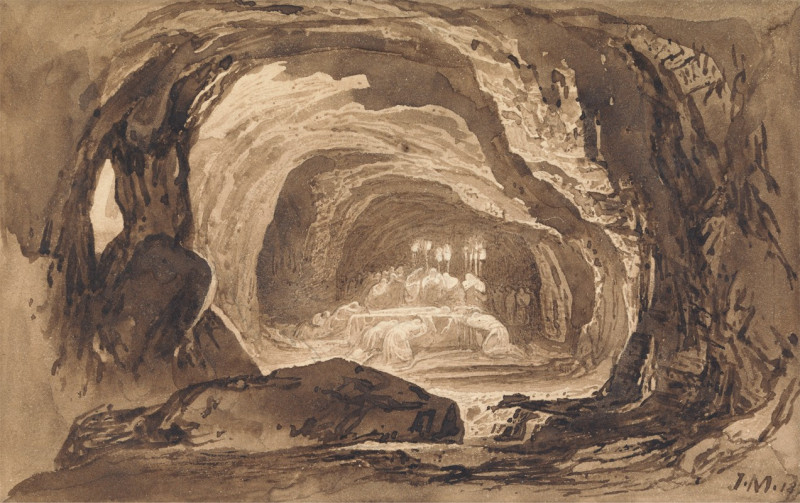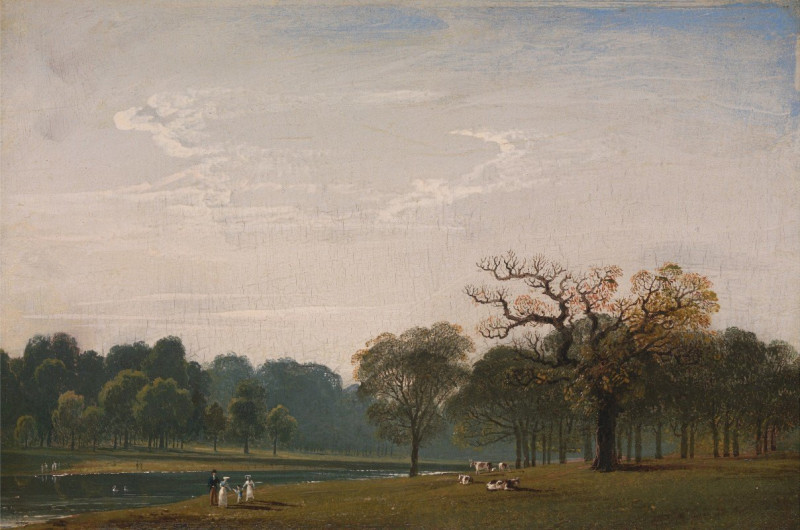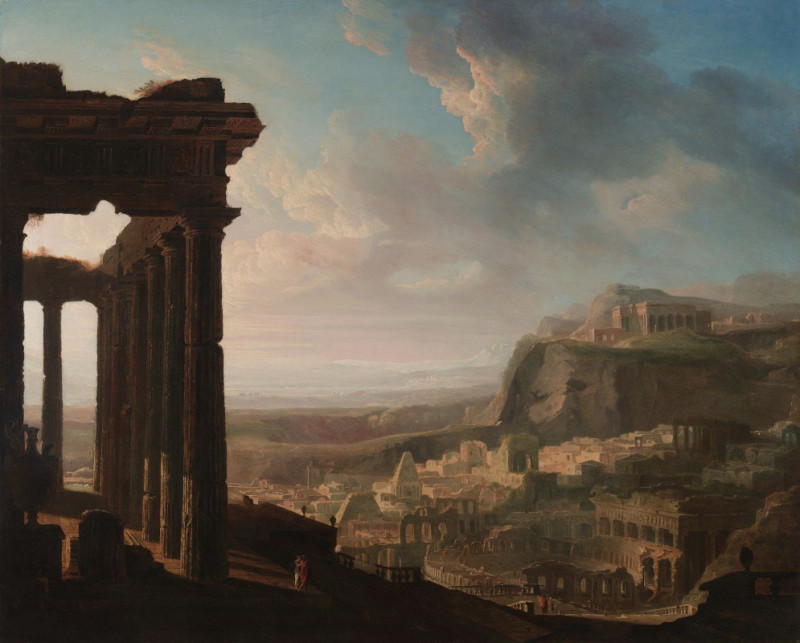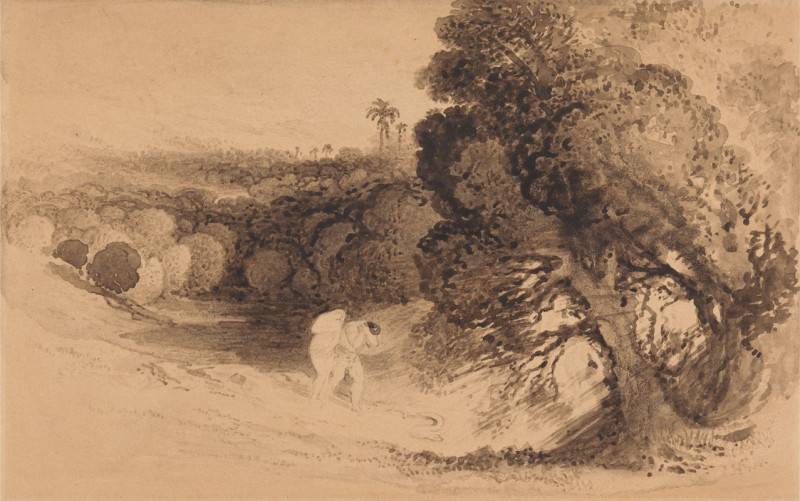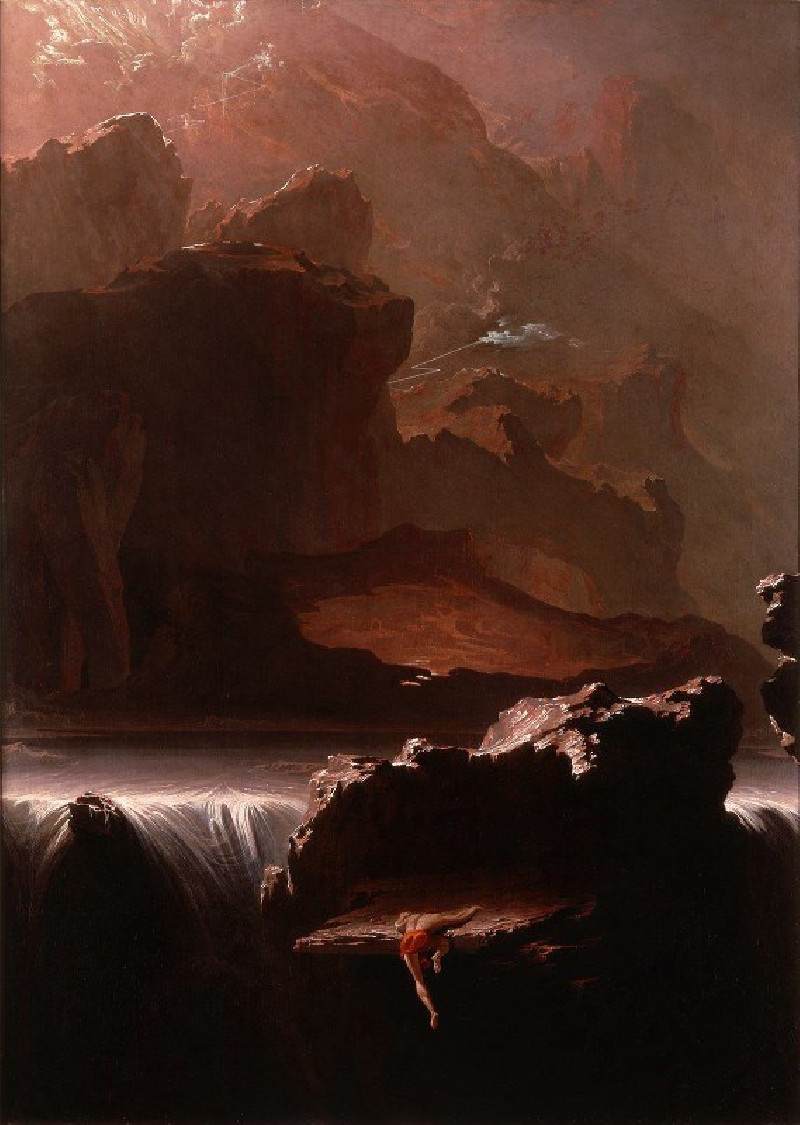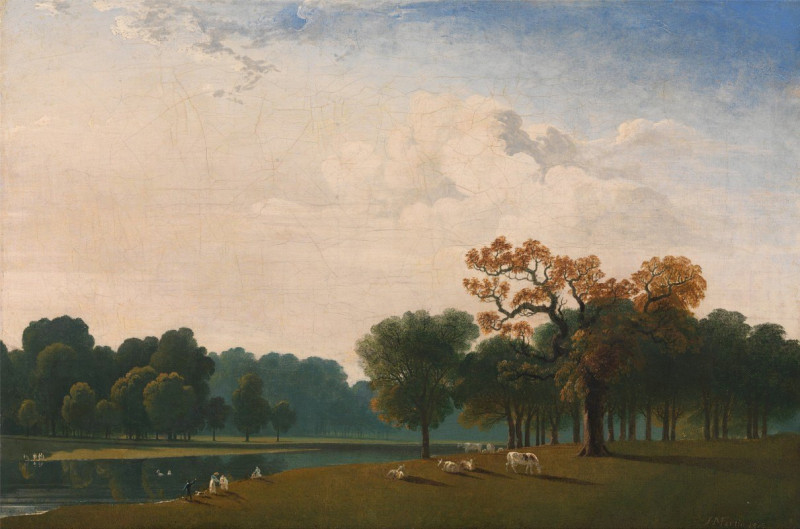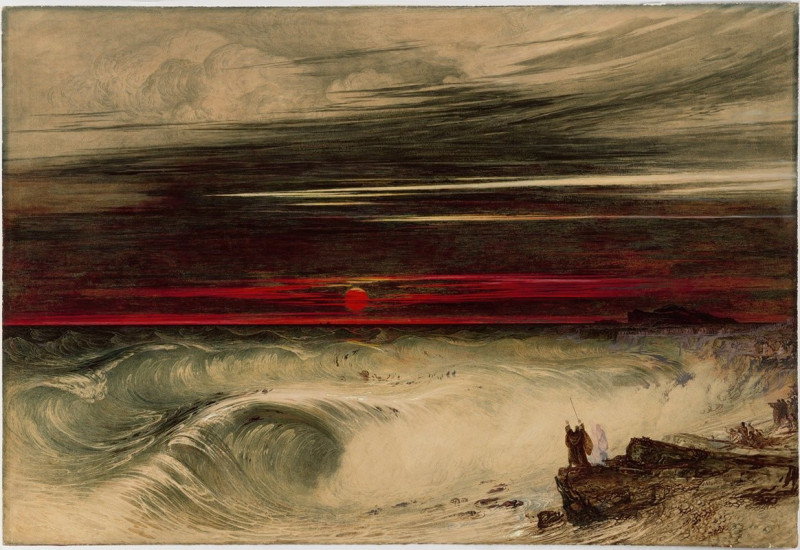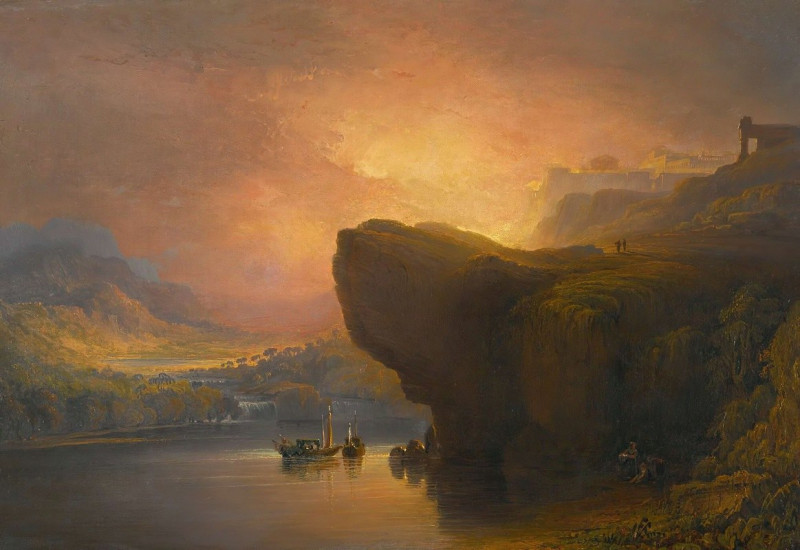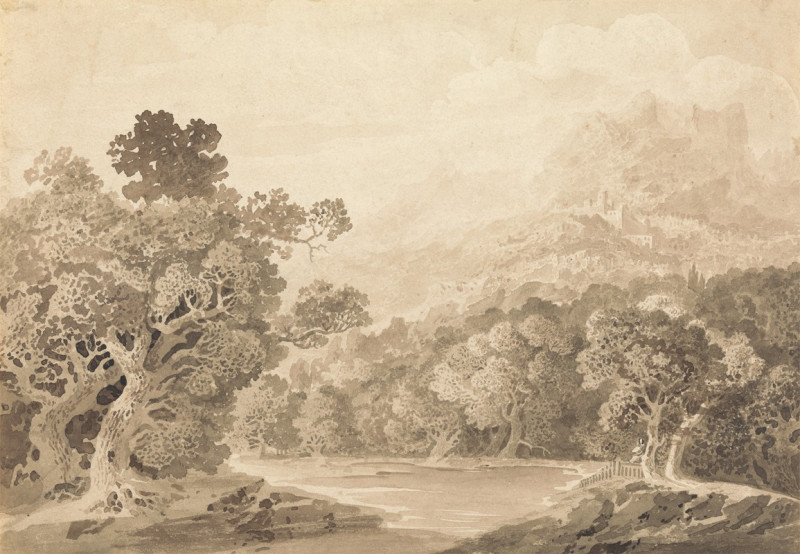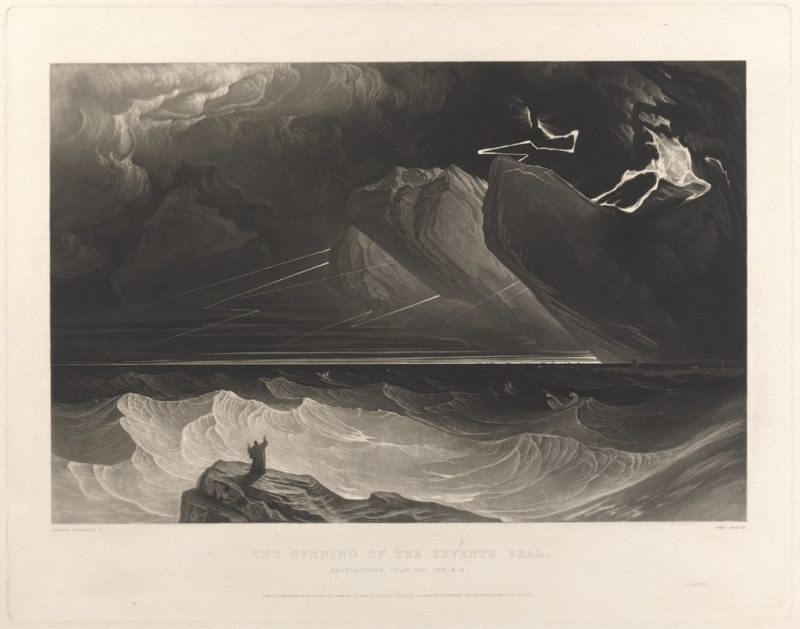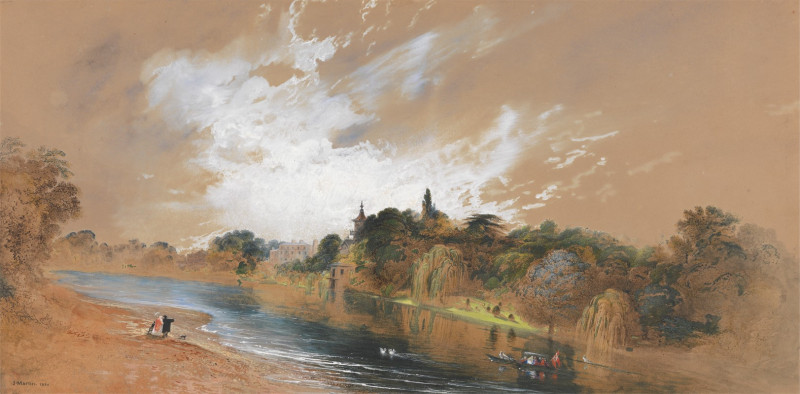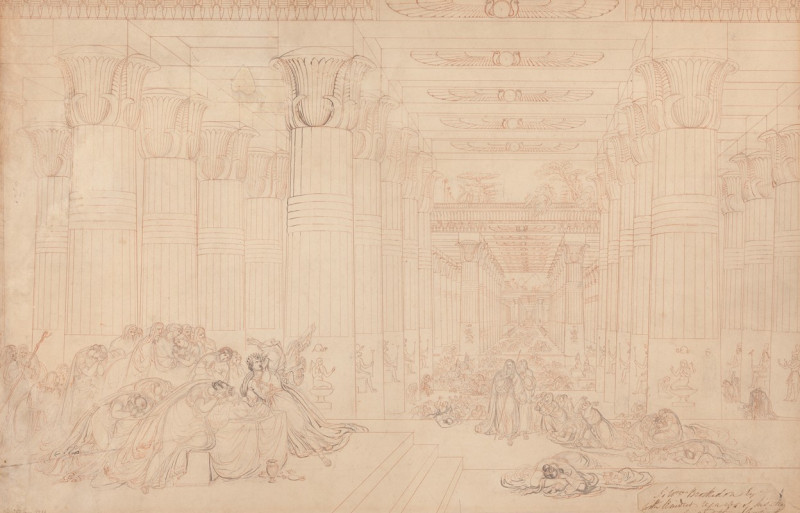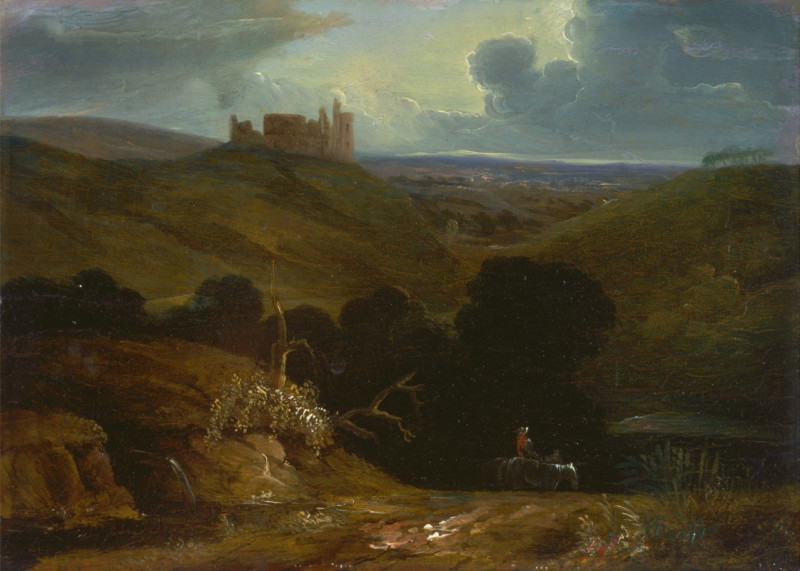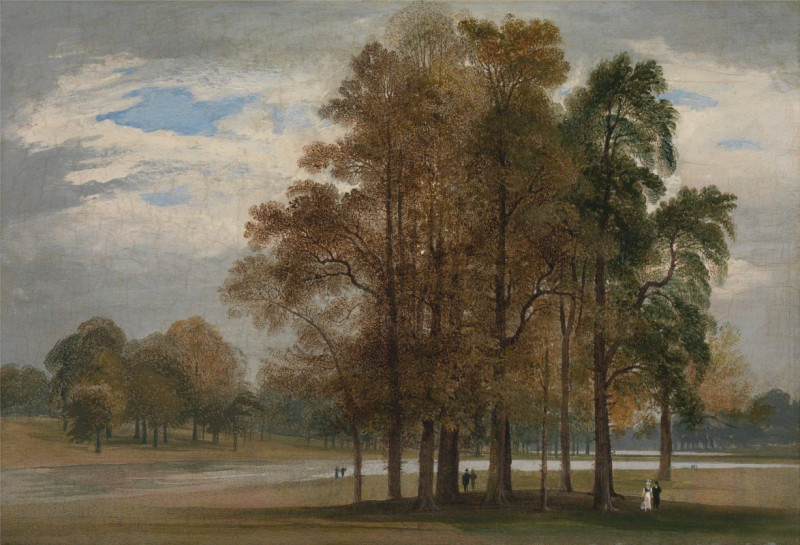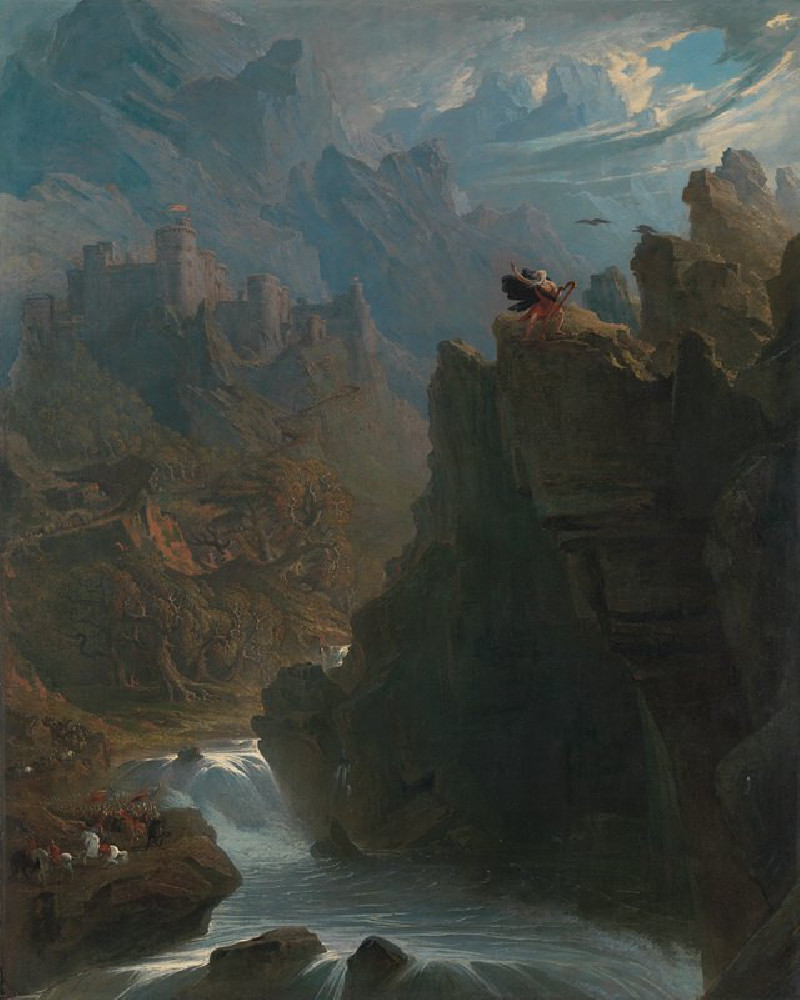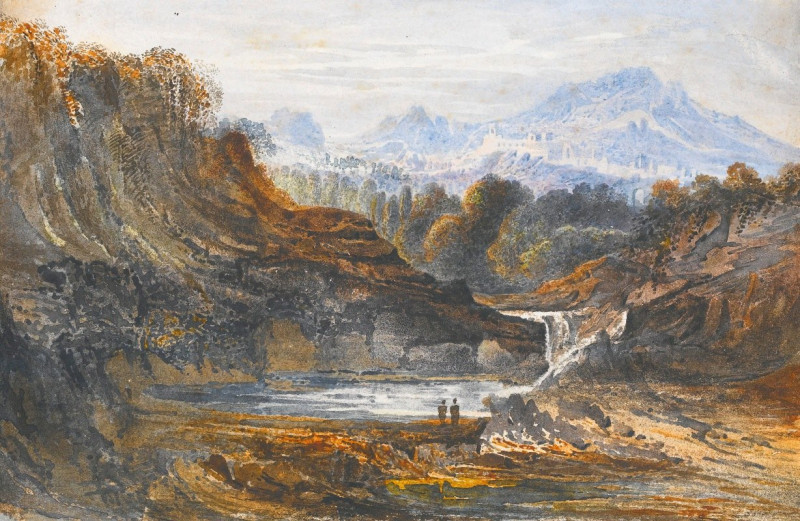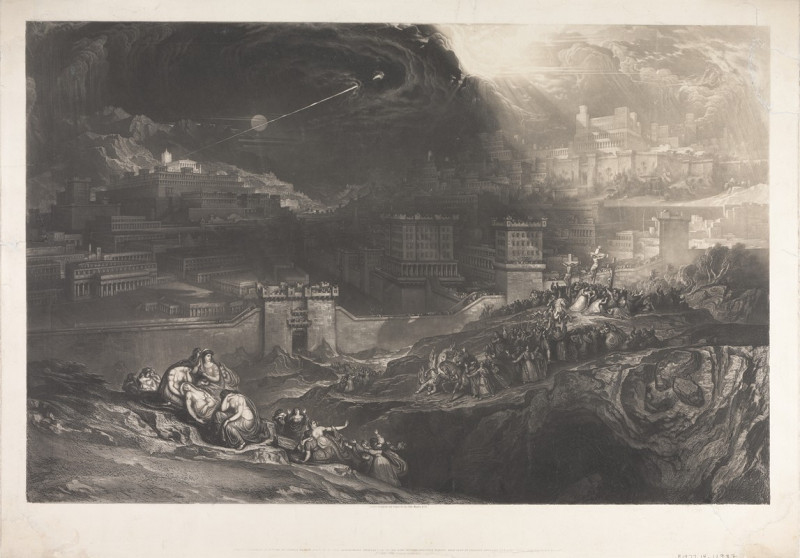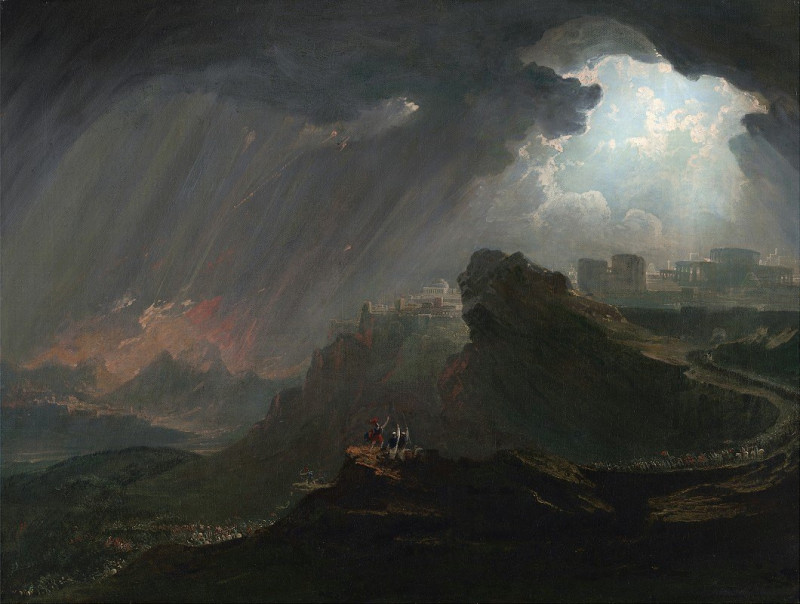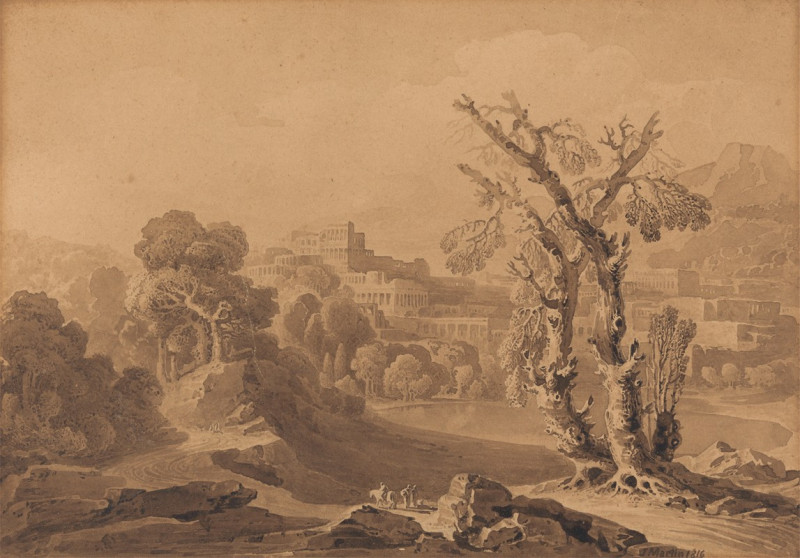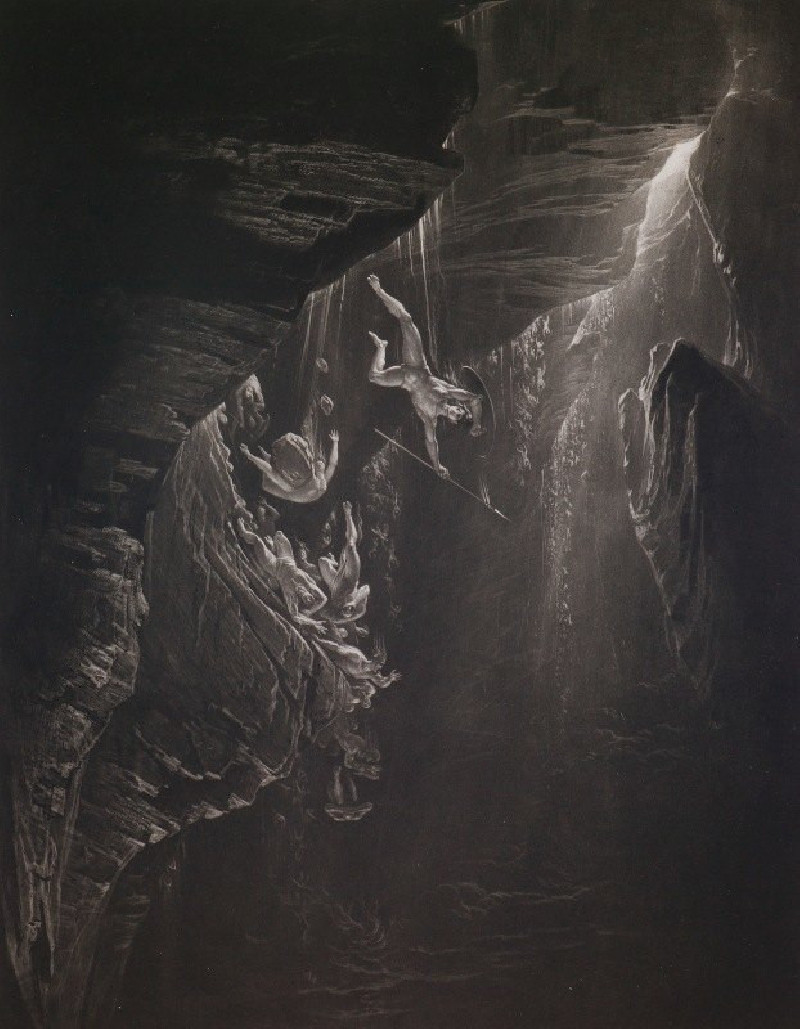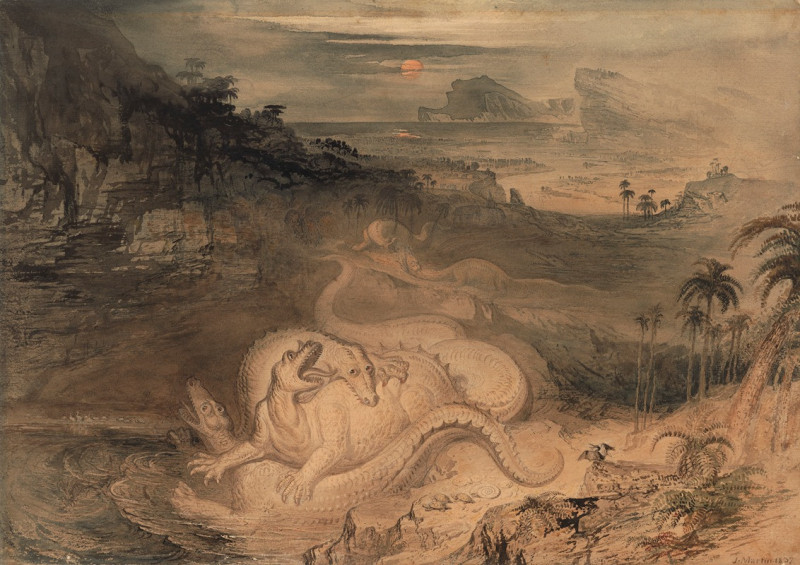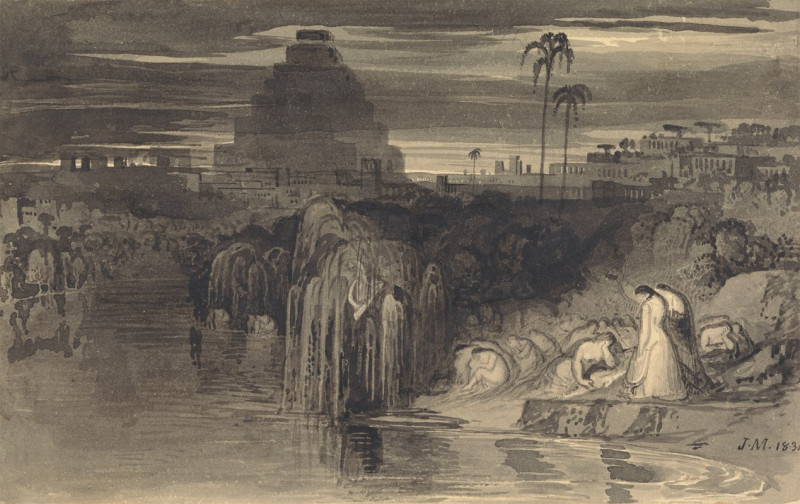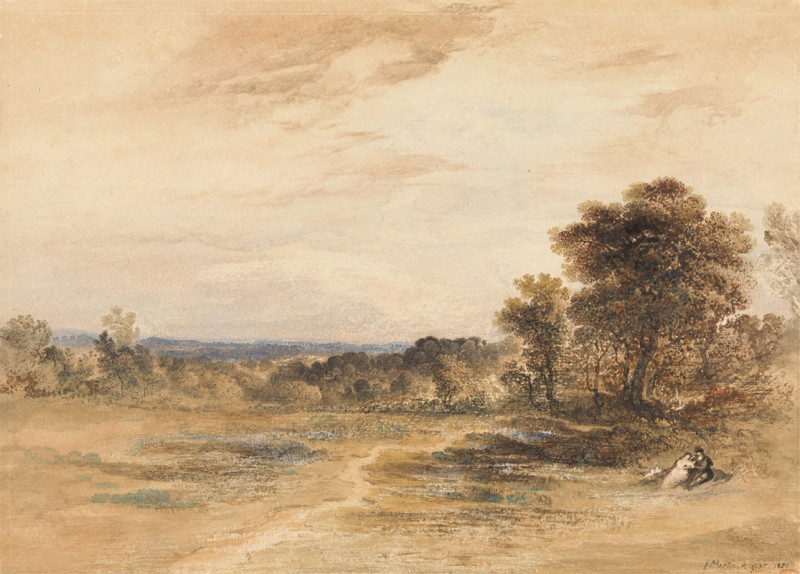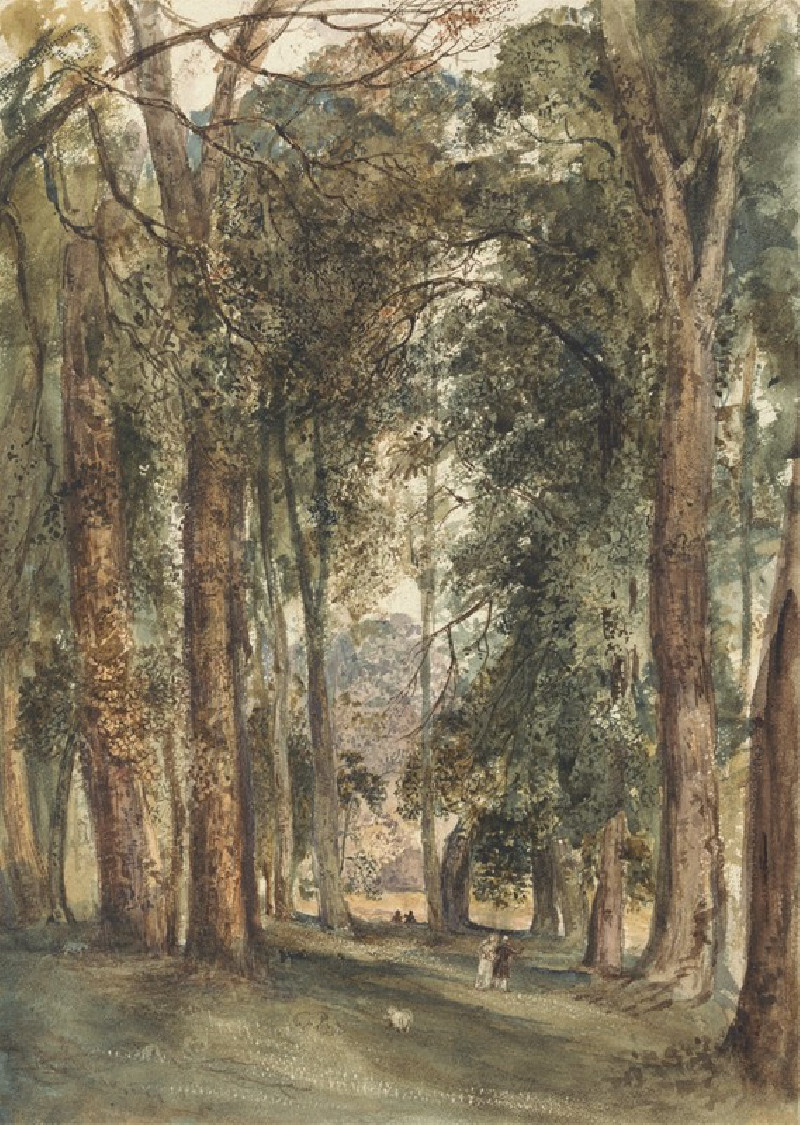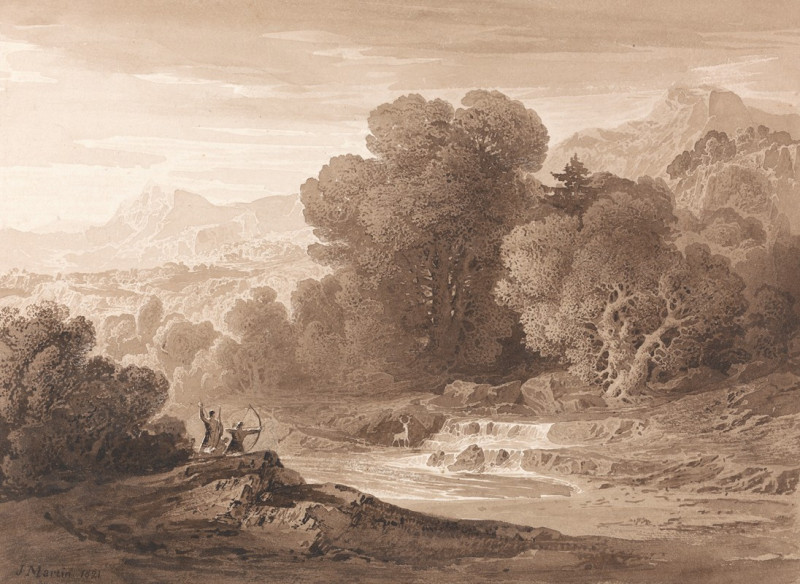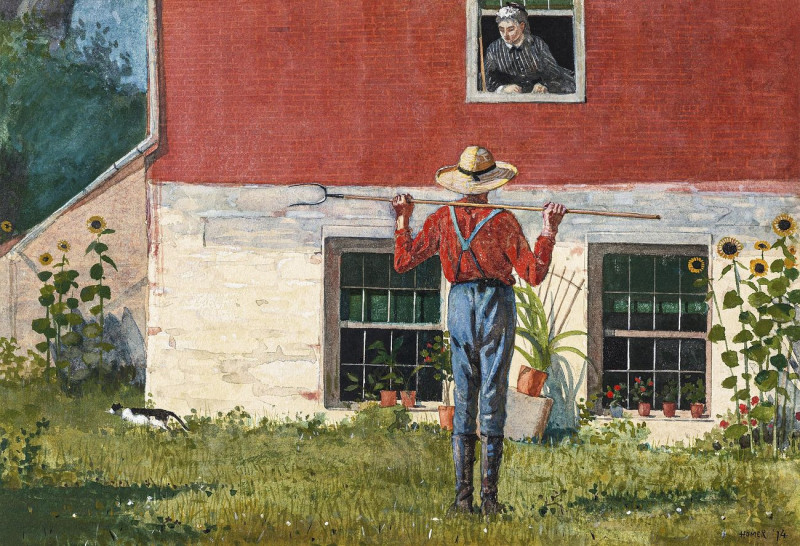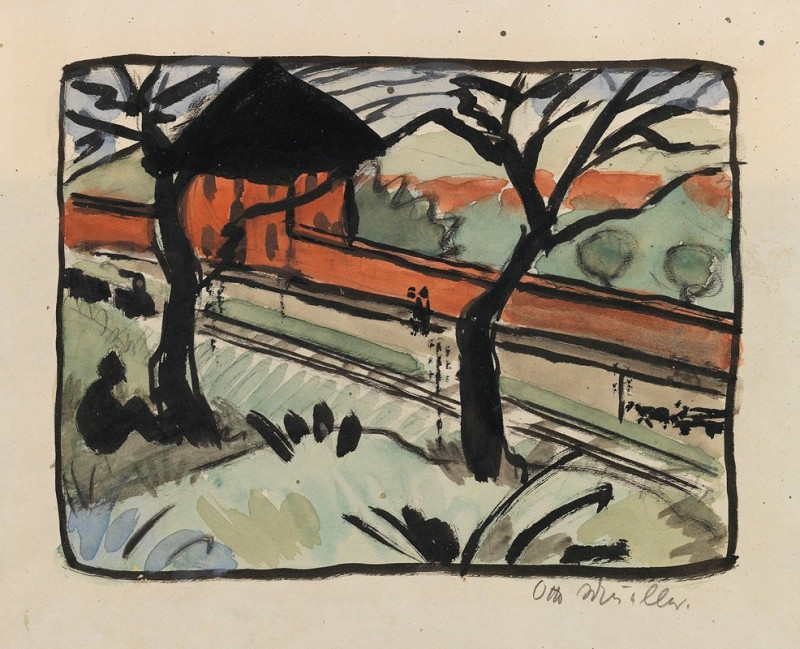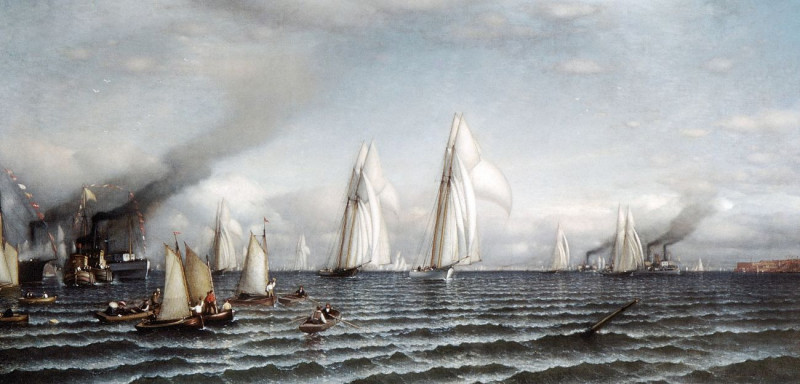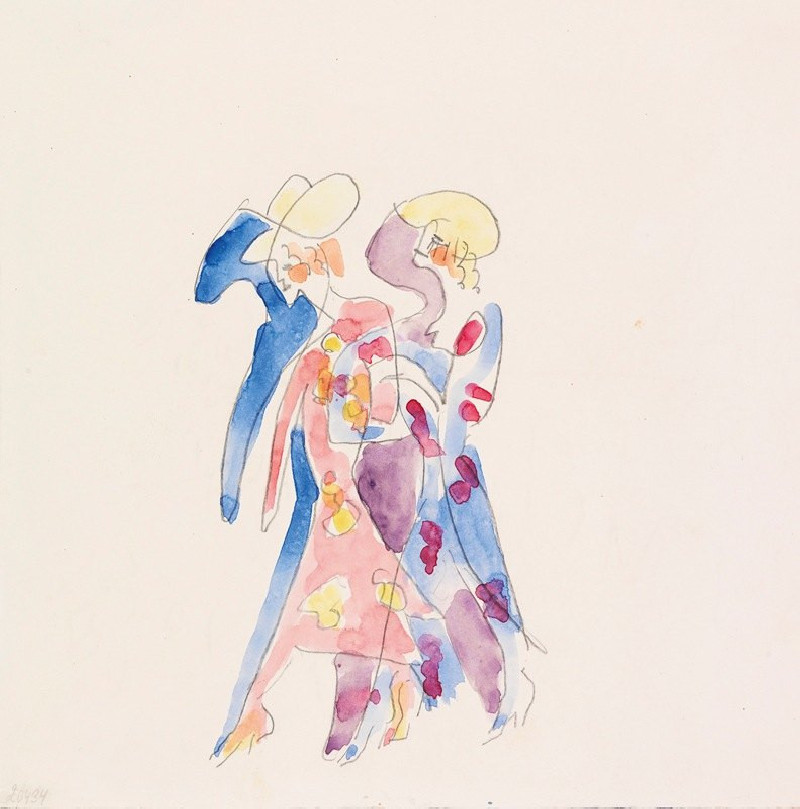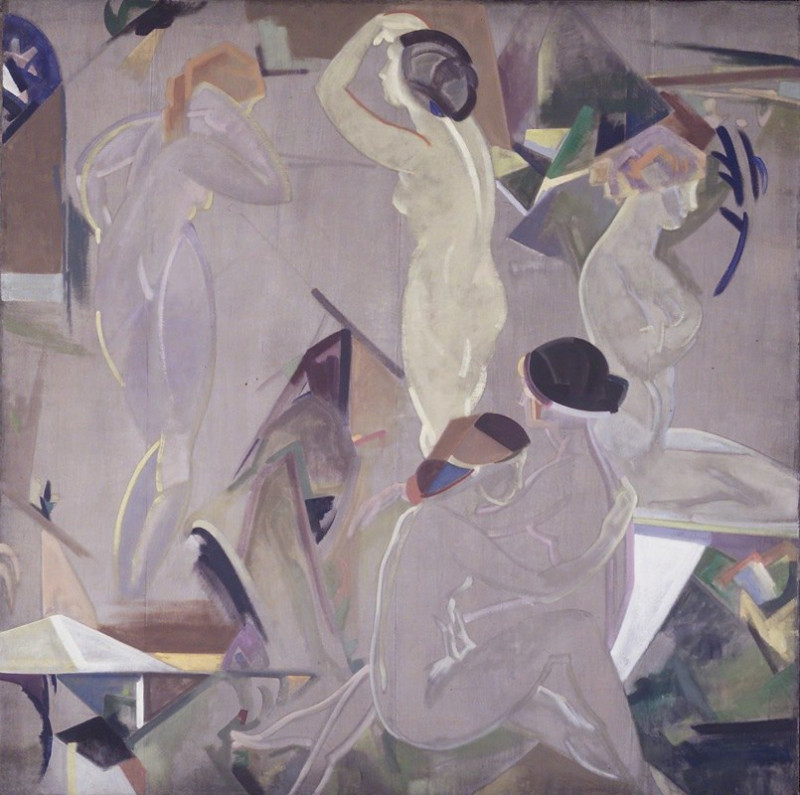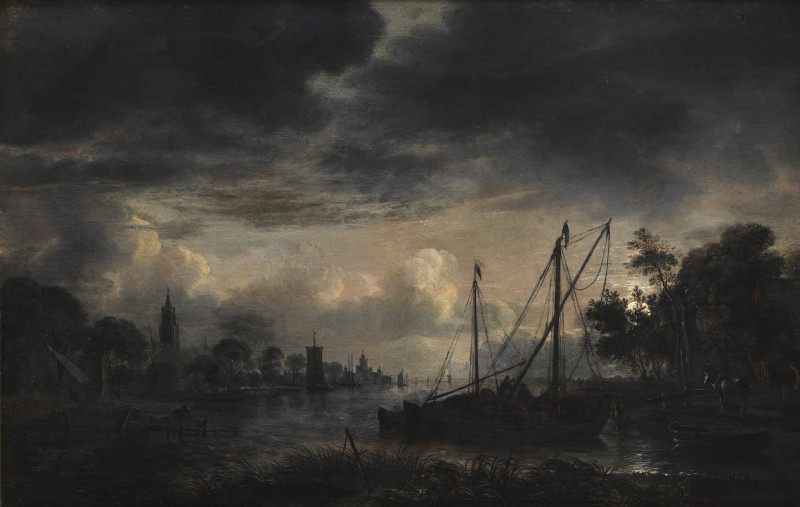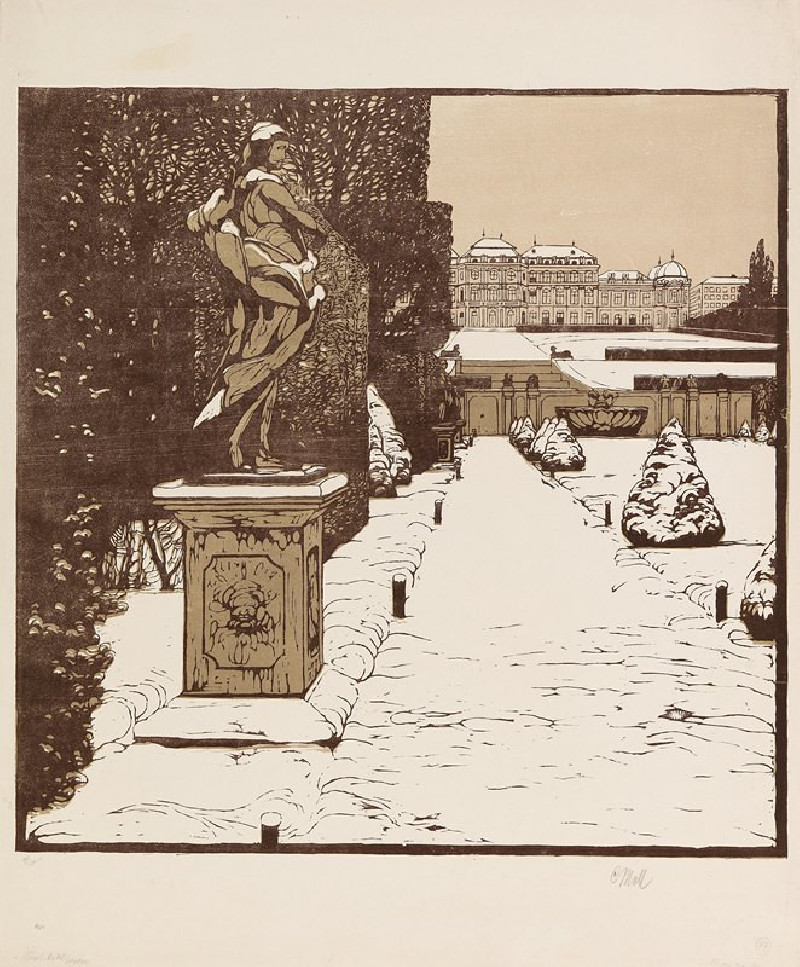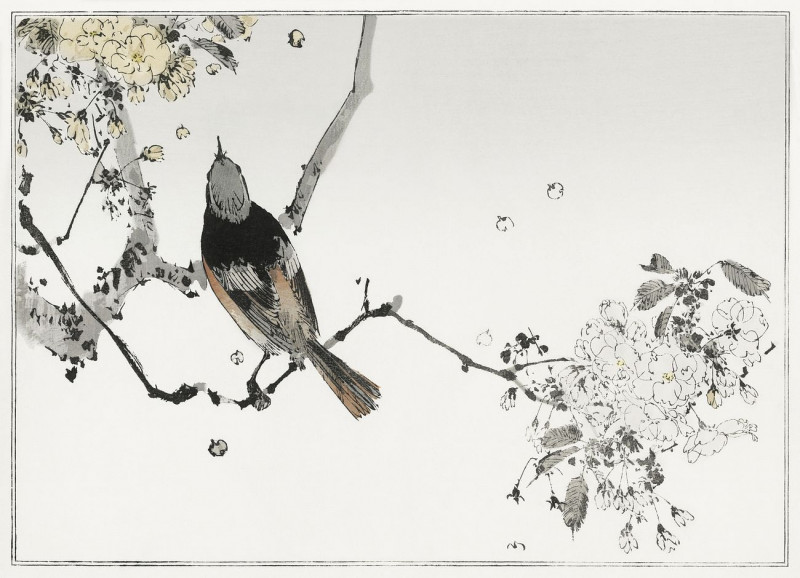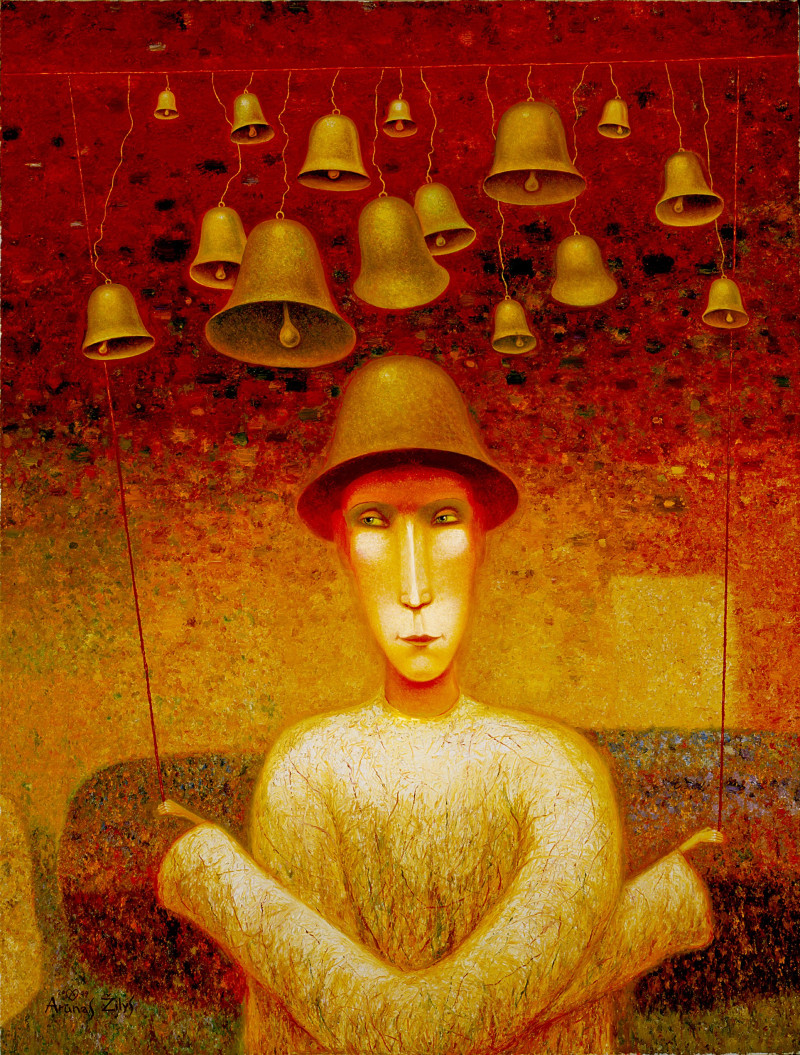Burial of Sarah (1833)
Technique: Giclée quality print
Recommended by our customers
More about this artwork
John Martin, an artist known for his dramatic and atmospheric landscapes, presents a somber and emotive scene in his 1833 watercolor, "Burial of Sarah." This painting captures the burial of Sarah, a biblical figure, in a cavernous setting that emphasizes both the solemnity and the sacredness of the moment.The composition uses a deep cavern as its focal point, enveloping a grieving group of figures illuminated by soft, ethereal light, possibly from torches they hold, which casts gentle glows on their solemn faces. This masterful use of lighting not only highlights the figures but also enhances the rough textures of the cavern walls, creating a stark contrast between the human element and the overwhelming power of nature.Martin's choice of a monochrome palette enhances the mood, with varying shades of brown and deep shadows contributing to a feeling of depth and melancholy. The painting invites the viewer to reflect on themes of life, death, and the eternal, evoking a sense of reverence and introspection.
Delivery
Returns
John Martin was an English Romantic painter, engraver and illustrator. He was celebrated for his typically vast and melodramatic paintings of religious subjects and fantastic compositions, populated with minute figures placed in imposing landscapes. Martin's paintings, and the prints made from them, enjoyed great success with the general public—in 1821 Thomas Lawrence referred to him as "the most popular painter of his day"—but were lambasted by John Ruskin and other critics.

